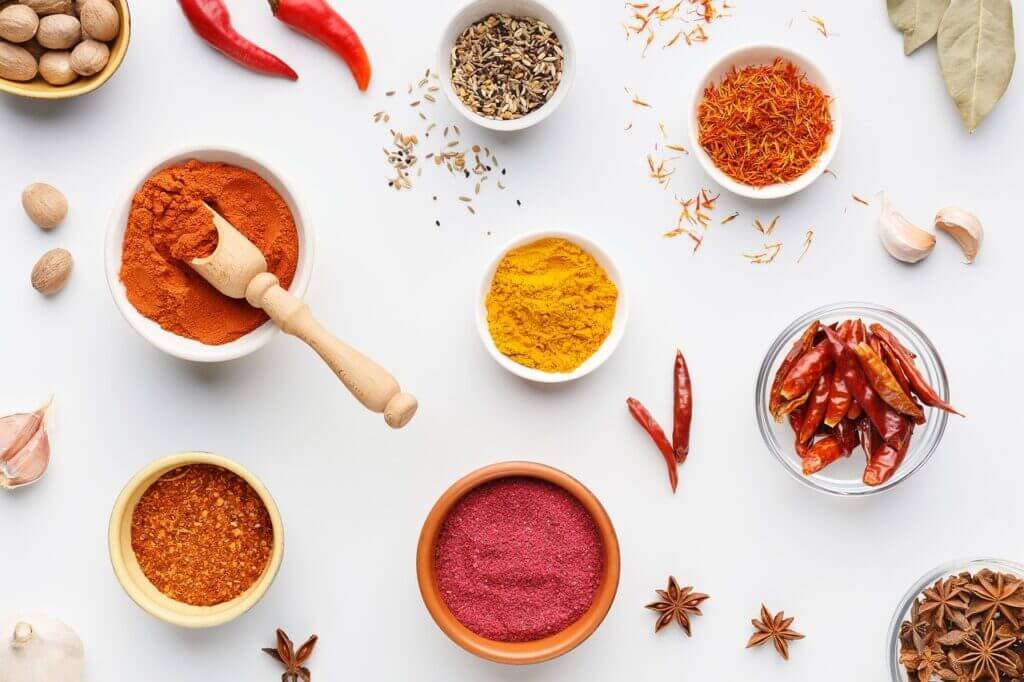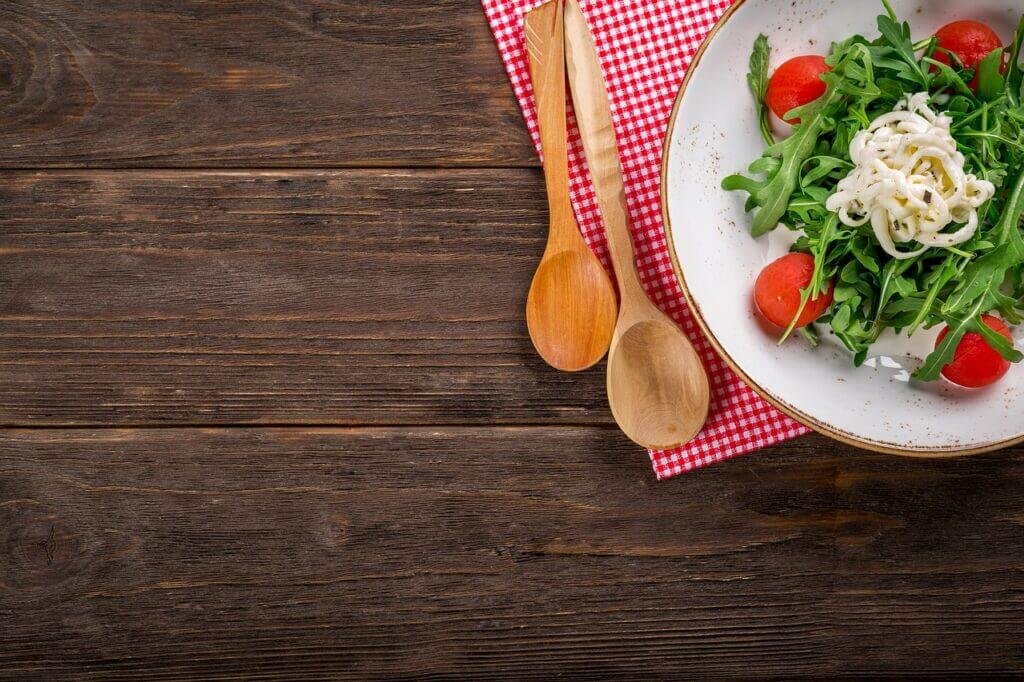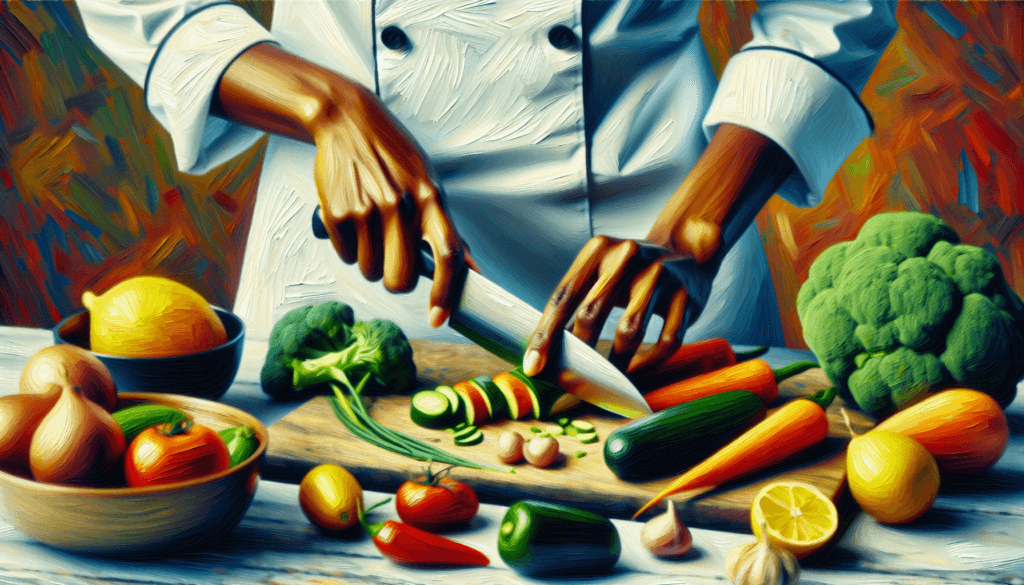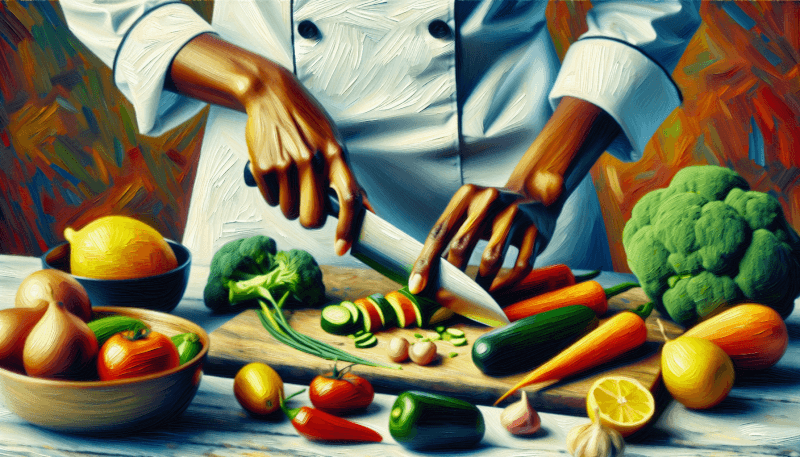Are you tired of struggling with your knife skills in the kitchen? Want to impress your friends and family with your chopping, dicing, and slicing abilities? Look no further – this article will teach you how to master knife skills like a chef. With a few simple tips and tricks, you’ll be cutting like a pro in no time. Say goodbye to unevenly chopped vegetables and hello to restaurant-worthy presentation. So, grab your favorite knife and get ready to elevate your cooking game.

Choosing the Right Knife
When it comes to mastering knife skills like a chef, the first step is choosing the right knife for the job. Different knives serve different purposes in the kitchen, so it’s important to consider the type of knife you need. Are you primarily chopping vegetables or slicing meat? Knowing your specific needs will help you make an informed decision.
Next, you’ll want to select a knife with a comfortable grip. After all, you’ll be spending a lot of time using it, so it’s crucial that it feels good in your hand. Look for a knife with an ergonomic handle that fits well and provides a secure grip. This will not only enhance your comfort but also improve your control and accuracy while cutting.
Additionally, you should look for a knife with a sharp and durable blade. A sharp blade not only makes your cutting tasks easier and more efficient but also ensures safety. Dull blades require more force to cut, which can increase the risk of accidents. Prioritize knives with high-quality stainless steel blades that resist rust and retain their sharpness even with regular use.
Understanding Knife Techniques
Now that you have the perfect knife in hand, it’s time to understand the various knife techniques used by professional chefs. Mastering these techniques will not only make your cutting tasks more efficient but also elevate the presentation of your dishes.
First and foremost, you need to master the basic knife grip. Hold the knife with your dominant hand, keeping your fingers curled around the handle and your thumb resting on the side of the blade. This grip provides stability and control, allowing you to guide the knife with precision.
Next, learn the proper cutting motions. Slice by gently moving the knife back and forth in a smooth, controlled manner. This technique is perfect for slicing through softer ingredients like tomatoes or bread. For tougher cuts, like meats or root vegetables, use a rocking motion. This involves pivoting the knife on its heel while keeping the blade in contact with the cutting board, creating a rocking motion that aids in slicing through harder textures.
To further enhance your knife skills, practice the rocking motion. This technique involves using the knife’s curved blade to pivot on the cutting board, allowing for effortless and precise chopping. By mastering this motion, you’ll be able to cut herbs or finely chop vegetables with great finesse.
Knife Safety and Maintenance
Knife safety is paramount when working in the kitchen, so it’s essential to familiarize yourself with proper safety techniques. Keeping your knives sharp is not only crucial for your cutting tasks but also for your safety. A sharp blade requires less force to cut, reducing the risk of slips and accidental cuts. Regularly hone your knife using a honing rod to maintain its sharpness.
Using proper cutting techniques is also vital for safety. Always keep your fingers curled inward and away from the blade when cutting to avoid accidents. Use a cutting board with a stable surface and make sure it doesn’t slip.
When it comes to storing your knives, it’s important to do so correctly. Avoid throwing them in a drawer where they can become damaged or pose a risk of injury. Invest in a knife block or magnetic strip to keep your knives organized, easily accessible, and safely stored.
Basic Knife Cuts
Mastering basic knife cuts is the foundation of your culinary skills. The slice cut is one of the most common techniques used in the kitchen. It involves making smooth, even cuts by moving the knife back and forth in a straight motion. This technique is perfect for slicing ingredients like tomatoes, bread, or even meats.
The dice cut involves cutting ingredients into small, uniform cubes. Start by creating slices and then stack those slices to create long matchsticks. Finally, cut across the matchsticks to create small cubes.
Another important basic knife cut is the julienne cut, which involves cutting ingredients into long, thin strips resembling matchsticks. Begin by cutting the ends of the ingredient to create a flat surface. Then, make long, even slices before turning the slices into matchstick-like strips.

Advanced Knife Skills
Once you’ve mastered the basics, it’s time to level up your knife skills with advanced techniques. The chiffonade cut is a technique used to cut leafy greens or herbs into thin, delicate strips. To achieve this, stack leaves on top of each other, roll them tightly, and then make thin, parallel cuts across the rolled leaves.
The tourne cut is a technique often used for root vegetables to create a decorative shape. Start by cutting off the sides of the vegetable to create a cylindrical shape. Then, cut angled, diagonal slices along the sides, creating a tapered shape with seven sides.
The brunoise cut is a precision technique used to create small, uniform cubes. Begin by dicing the ingredient into small, even cubes. Then, cut those cubes into even smaller cubes, creating a fine dice. This technique is perfect for ingredients you want to highlight in a dish, such as shallots or garlic.
Knife Skills for Specific Ingredients
Different ingredients require different knife skills to handle them effectively. When preparing vegetables, it’s crucial to have proper knife skills. Master techniques like the julienne cut or chiffonade for leafy greens, such as spinach or lettuce. For harder vegetables like carrots or potatoes, the slice and dice cuts are ideal.
When working with fruits, it’s important to handle them with care. Delicate fruits like berries can be gently sliced using a slice cut, while larger fruits like melons can be cut into uniform cubes using the dice cut. Remember to remove any seeds or pits before cutting.
Handling meat and fish with precision is essential to achieve desired results. Use a sharp knife to make clean, even cuts when trimming fat or portioning meat. For filleting fish, use a flexible fillet knife to effortlessly glide along the bone, removing skin and bones cleanly.

Knife Skills Practice Exercises
To truly master knife skills, practice is key. By working with different ingredients and challenging yourself with various cuts, you’ll improve your speed, accuracy, and overall technique. Start by practicing with everyday ingredients like onions, tomatoes, or bell peppers. As you become more confident, move on to more challenging ingredients like butternut squash or whole chickens.
For speed and accuracy drills, set a timer and challenge yourself to complete cutting tasks within a specific timeframe. This will help improve your efficiency in the kitchen and give you a sense of accomplishment as you become faster and more accurate.
As you progress, challenge yourself by attempting different cuts and techniques. This will expand your repertoire of knife skills and allow you to handle a wider range of ingredients confidently.
Knife Sharpening Techniques
Having sharp knives is essential for efficient and safe cutting. Regular knife maintenance is crucial to maintain their sharpness. Using a honing rod regularly can align the blade and keep it sharp. Hold the honing rod vertically and at a slight angle, then glide the blade across the rod in a smooth, sweeping motion. Repeat on both sides of the blade for optimum results.
For a refined, razor-sharp edge, sharpen your knives with a whetstone. Soak the whetstone in water for a few minutes, then position it on a stable surface. Hold the knife at a consistent angle and glide the blade across the whetstone, alternating sides with each stroke. Remember to maintain a consistent pressure and repeat the process until you achieve the desired sharpness.

Essential Knife Tools and Accessories
When it comes to knife skills, having the right tools and accessories can greatly enhance your experience in the kitchen. Choosing the right cutting board is essential. Opt for a sturdy, non-slip cutting board that won’t damage your knives. Wooden and plastic cutting boards are popular choices.
Using a knife steel is another important tool for maintaining your knives. A knife steel helps realign the blade’s edge, keeping it straight and sharp. After each use, run the knife along the steel in a smooth, consistent motion to maintain its edge alignment.
Investing in knife guards and sheaths is also a wise choice to protect your knives when not in use or during transportation. Knife guards prevent blades from dulling or getting damaged, while sheaths provide an extra layer of safety to prevent accidental cuts.
Improving Knife Skills with Professional Tips
One of the best ways to improve your knife skills is to learn from the experts in culinary arts. Seek out professional chefs or experienced cooks who can share their knowledge and techniques with you. They can offer valuable tips and tricks that will take your knife skills to the next level.
Consider taking a knife skills class or workshop. Many culinary schools and cooking organizations offer these courses, which provide hands-on instruction and guidance. These classes often cover a wide range of techniques, from basic cuts to advanced knife skills, and allow you to practice under the guidance of knowledgeable instructors.
Consistency is key when it comes to improving your knife skills. Practice regularly to build muscle memory and refine your technique. The more you work with knives, the more comfortable and confident you’ll become, allowing you to tackle any cutting task with ease.
Mastering knife skills like a chef takes time, practice, and dedication. By choosing the right knife, understanding various techniques, prioritizing safety and maintenance, and continuously improving your skills, you’ll be well on your way to becoming a knife-wielding expert in the kitchen. So roll up your sleeves, grab your favorite knife, and start honing your skills today!



